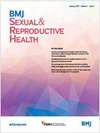金星。
Q Medicine
Journal of Family Planning and Reproductive Health Care
Pub Date : 2017-07-01
DOI:10.1136/jfprhc-2016-101664
引用次数: 0
摘要
本文章由计算机程序翻译,如有差异,请以英文原文为准。
Venus.
LARC use decreases as perceived barriers to use increase Perceived barriers are the strongest predictor of women’s use of long-acting forms of reversible contraception (LARC), with use decreasing as barriers increase. In one Welsh qualitative study barriers included fear and embarrassment. Ironically, increases in “health motivation to reduce pregnancy” and “perceived behavioural control” reduced the odds of a woman using LARC – which might seem counterintuitive until one considers that women who score highly on these parameters probably see themselves as able to manage the use of non-LARC methods.
求助全文
通过发布文献求助,成功后即可免费获取论文全文。
去求助
来源期刊

Journal of Family Planning and Reproductive Health Care
OBSTETRICS & GYNECOLOGY-
CiteScore
0.84
自引率
0.00%
发文量
0
审稿时长
>12 weeks
期刊介绍:
The trading of Professional, Managerial & Healthcare Publications Ltd has been transferred to its parent company, Keyways Publishing Ltd.
 求助内容:
求助内容: 应助结果提醒方式:
应助结果提醒方式:


